Abstract
Sugar, amino acid, and 14C-assimilate release from attached maize (Zea mays L.) pedicels was studied following treatment with several chemical inhibitors. In the absence of these agents, sugar release was nearly linear over a 7-hour period. At least 13 amino acids were released with glutamine comprising over 30% of the total. Release was not affected by potassium concentration, 10-minute pretreatments with p-chloromercuribenzene sulfonic acid (PCMBS) or dithiothreitol, and low concentrations of CaCl2. Three hours or more exposure to PCMBS, dinitrophenol, N-ethylmaleimide, or 2,4,6-trinitrobenzene sulfonic acid strongly inhibited 14C-assimilate, sugar, and amino acid release from the pedicel. These treatments also reduced 14C-assimilate movement into the kernel bases. It is, therefore, likely that reduced unloading, caused by these relatively long-term exposures to chemical inhibitors, was related to reduced translocation of assimilates into treated kernels. Whether this effect is due to disruption of kernel metabolism and sieve element function or reduced assimilate unloading and subsequent accumulation of unlabeled assimilates within the pedicel tissues cannot be determined at this time.
Full text
PDF
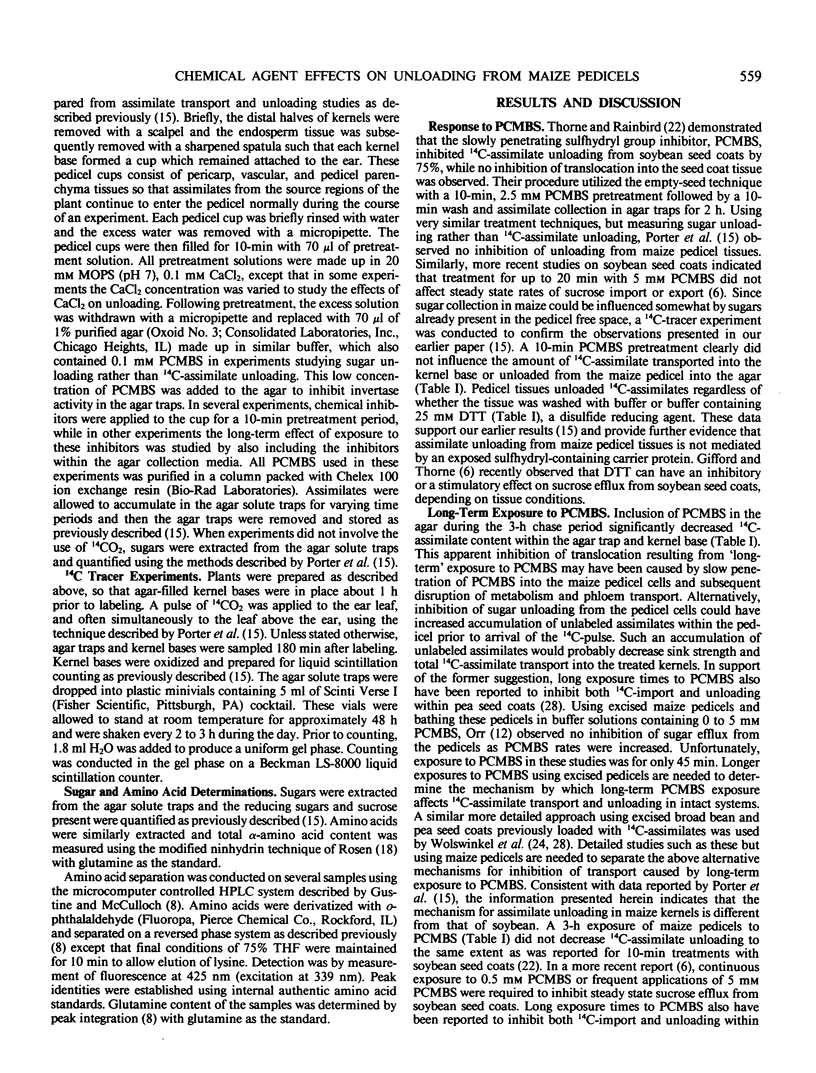
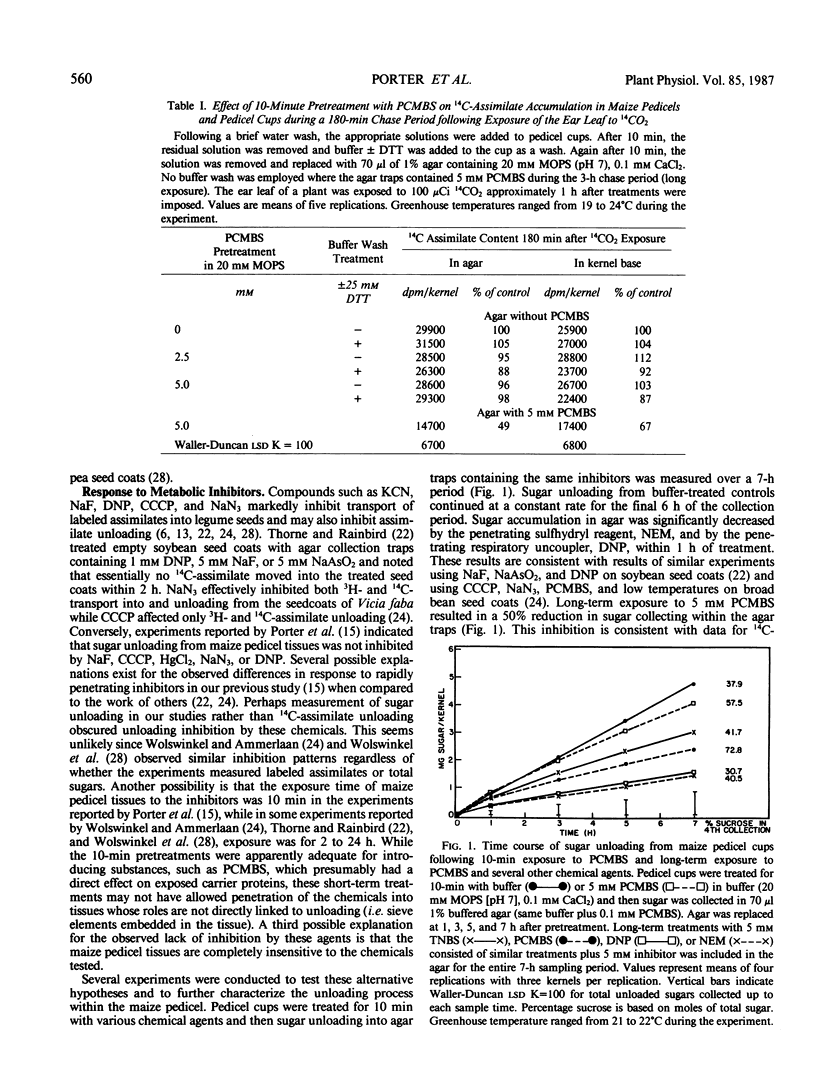

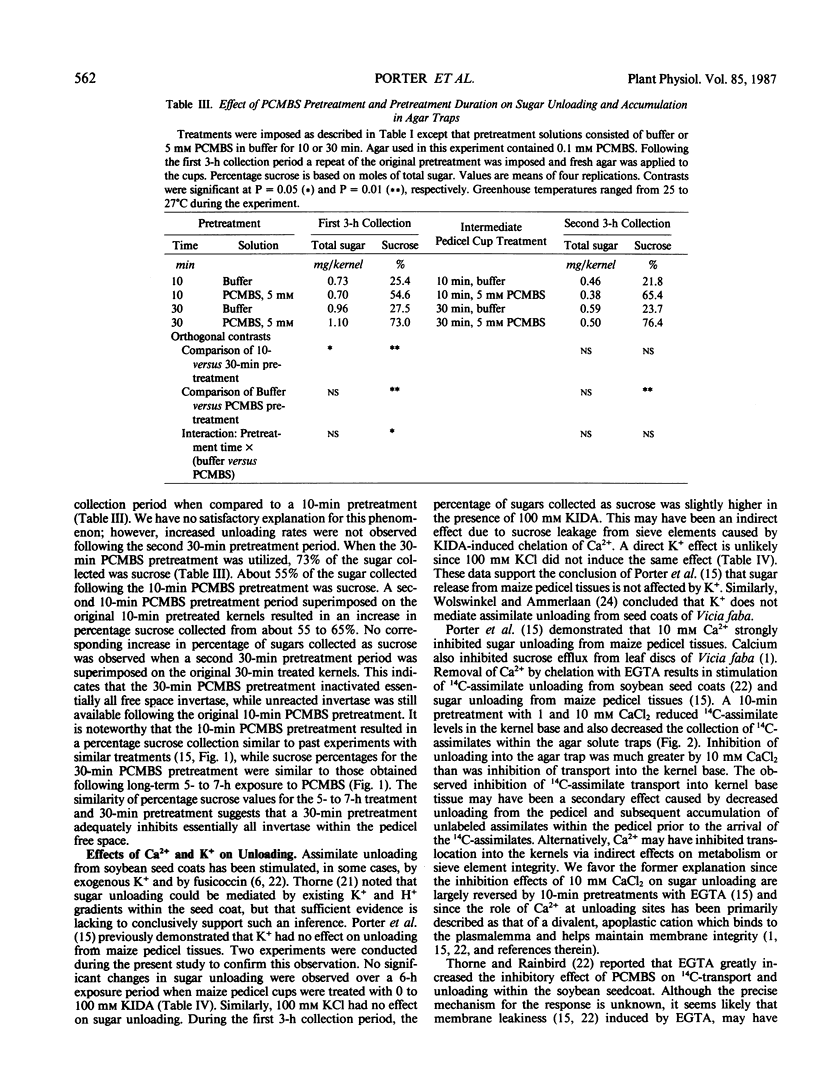
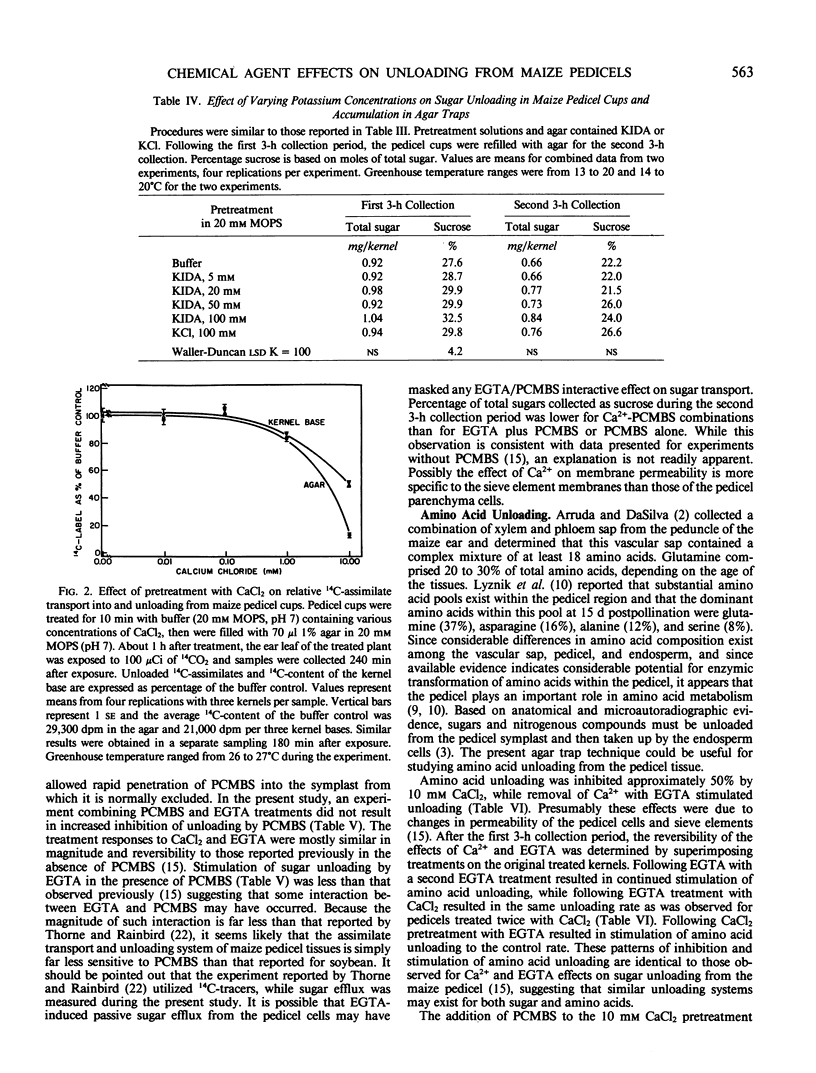
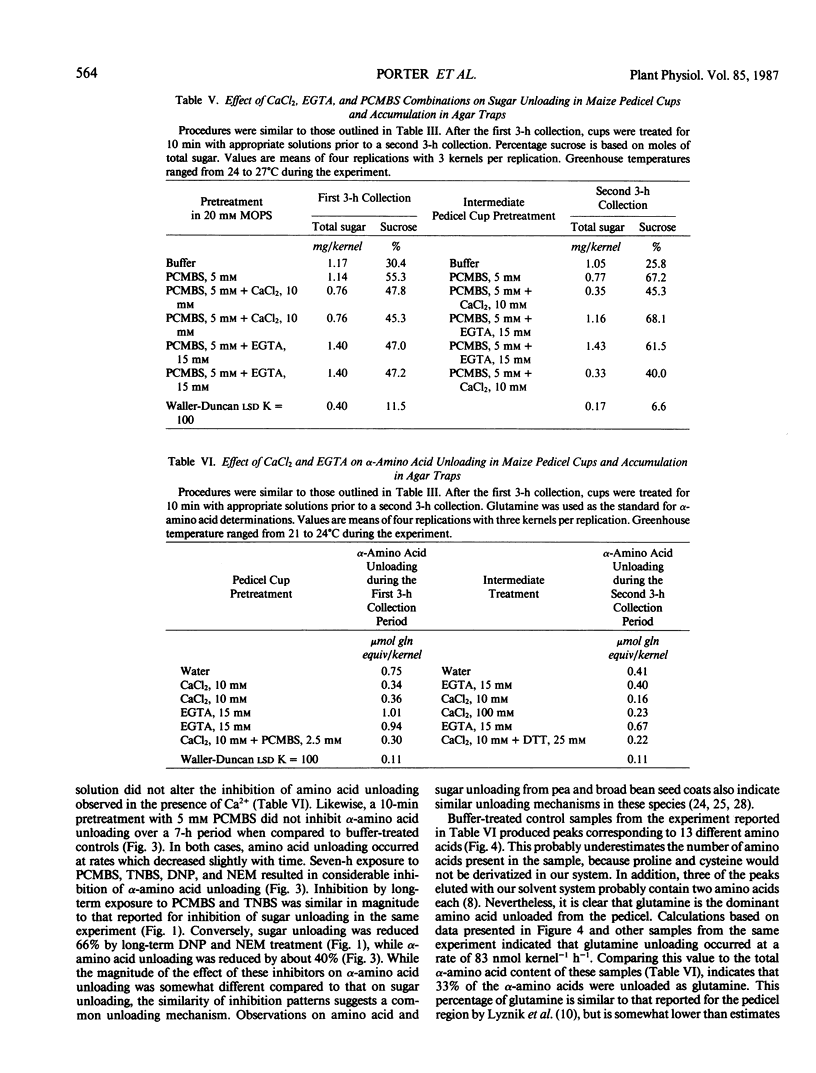

Selected References
These references are in PubMed. This may not be the complete list of references from this article.
- Anderson J. M. Release of Sucrose from Vicia faba L. Leaf Discs. Plant Physiol. 1983 Feb;71(2):333–340. doi: 10.1104/pp.71.2.333. [DOI] [PMC free article] [PubMed] [Google Scholar]
- Felker F. C., Shannon J. C. Movement of C-labeled Assimilates into Kernels of Zea mays L: III. AN ANATOMICAL EXAMINATION AND MICROAUTORADIOGRAPHIC STUDY OF ASSIMILATE TRANSFER. Plant Physiol. 1980 May;65(5):864–870. doi: 10.1104/pp.65.5.864. [DOI] [PMC free article] [PubMed] [Google Scholar]
- Giaquinta R. T., Lin W., Sadler N. L., Franceschi V. R. Pathway of Phloem unloading of sucrose in corn roots. Plant Physiol. 1983 Jun;72(2):362–367. doi: 10.1104/pp.72.2.362. [DOI] [PMC free article] [PubMed] [Google Scholar]
- Gifford R. M., Thorne J. H. Phloem unloading in soybean seed coats: dynamics and stability of efflux into attached ;empty ovules'. Plant Physiol. 1986 Feb;80(2):464–469. doi: 10.1104/pp.80.2.464. [DOI] [PMC free article] [PubMed] [Google Scholar]
- Porter G. A., Knievel D. P., Shannon J. C. Assimilate Unloading from Maize (Zea mays L.) Pedicel Tissues : I. Evidence for Regulation of Unloading by Cell Turgor. Plant Physiol. 1987 Jan;83(1):131–136. doi: 10.1104/pp.83.1.131. [DOI] [PMC free article] [PubMed] [Google Scholar]
- Porter G. A., Knievel D. P., Shannon J. C. Sugar Efflux from Maize (Zea mays L.) Pedicel Tissue. Plant Physiol. 1985 Mar;77(3):524–531. doi: 10.1104/pp.77.3.524. [DOI] [PMC free article] [PubMed] [Google Scholar]
- ROSEN H. A modified ninhydrin colorimetric analysis for amino acids. Arch Biochem Biophys. 1957 Mar;67(1):10–15. doi: 10.1016/0003-9861(57)90241-2. [DOI] [PubMed] [Google Scholar]
- Rainbird R. M., Thorne J. H., Hardy R. W. Role of amides, amino acids, and ureides in the nutrition of developing soybean seeds. Plant Physiol. 1984 Feb;74(2):329–334. doi: 10.1104/pp.74.2.329. [DOI] [PMC free article] [PubMed] [Google Scholar]
- Schmalstig J. G., Geiger D. R. Phloem Unloading in Developing Leaves of Sugar Beet : I. Evidence for Pathway through the Symplast. Plant Physiol. 1985 Sep;79(1):237–241. doi: 10.1104/pp.79.1.237. [DOI] [PMC free article] [PubMed] [Google Scholar]
- Thorne J. H., Rainbird R. M. An in vivo technique for the study of Phloem unloading in seed coats of developing soybean seeds. Plant Physiol. 1983 May;72(1):268–271. doi: 10.1104/pp.72.1.268. [DOI] [PMC free article] [PubMed] [Google Scholar]


